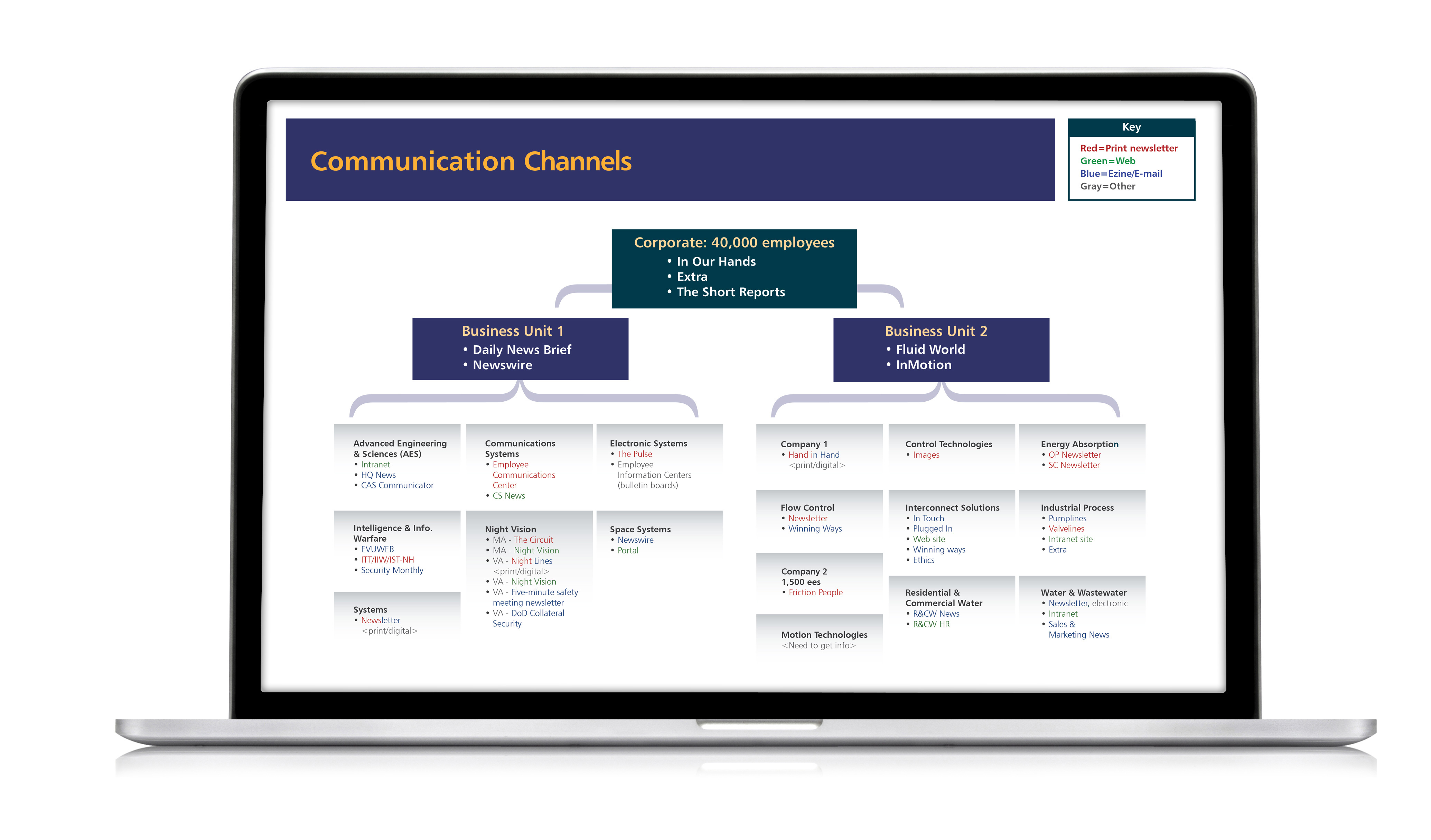|
We love data! We conduct research to inform planning decisions. We also audit internal communication programs to determine impact and how to raise the bar with communication.
Design thinking and implementation
|
Case study: Conducting a comprehensive audit for a global organization
Internal communication audits are a big commitment since they typically include more than one research method. So, what’s the payoff? Why take on a project like this? Here’s the story of a corporate communication team that conducted a comprehensive audit. The result? (Spoiler alert.) The data helped convince a group of loosely connected stakeholders to make major changes to how the company communicated with employees.
Starting with a simple premise
The corporate communication team at an industrial manufacturer was concerned that employees were being bombarded with communication from multiple sources. Members of the team had a theory that newsletters had exploded, and they needed to influence other communicators (who did not report to the corporate team) that it would be more efficient and effective to develop a centralized, coordinated approach.
Our work with the team started with a simple objective for the audit: Evaluate the current state of internal communication and create a vision for the future.
Defining our research methods
This organization’s approach is a good example of how audits typically incorporate several research methods. And given the global scale of this company and the goal of influencing a large group of colleagues, the communication team decided it needed a comprehensive study that ensured representation across the organization:
- Channel assessment: We cataloged 97 channels from 17 business units, assessed their effectiveness and developed an impact grid to show what the average employee receives.

- Interviews: We interviewed 21 leaders and several senior communicators to understand the communication process and issues from the stakeholder point of view.
- Focus groups: We moderated 28 in-person and four web-based focus groups to assess employees’ knowledge of key topics, their experience with communication and ideas for improvement.
- Site visits: We visited 14 key sites from around the world and documented employees’ communication experiences.
The result?
After reviewing the data, we invited the corporate communication team and an extended group of communicators to review the audit results and develop actions—a collaboration completed in two meetings. During the first meeting, we shared results from each of the research methods and facilitated a group brainstorm about the next steps. The second meeting was devoted to prioritizing recommendations and developing a high-level plan for each.
The extended team committed to several changes:
- Define the communication system: objectives for corporate and business units, annual planning. process, and standards and guidelines.
- Collapse corporate and business unit channels (especially newsletters) and update style.
- Develop an Internal Communication network.
- Create a leader and manager communication program.
- Build knowledge of the corporate strategy.
Remember: Not every audit needs to be this big. For example, we conducted a simple audit of a weekly news digest that included a seven-question pulse survey and two web-based focus groups.

